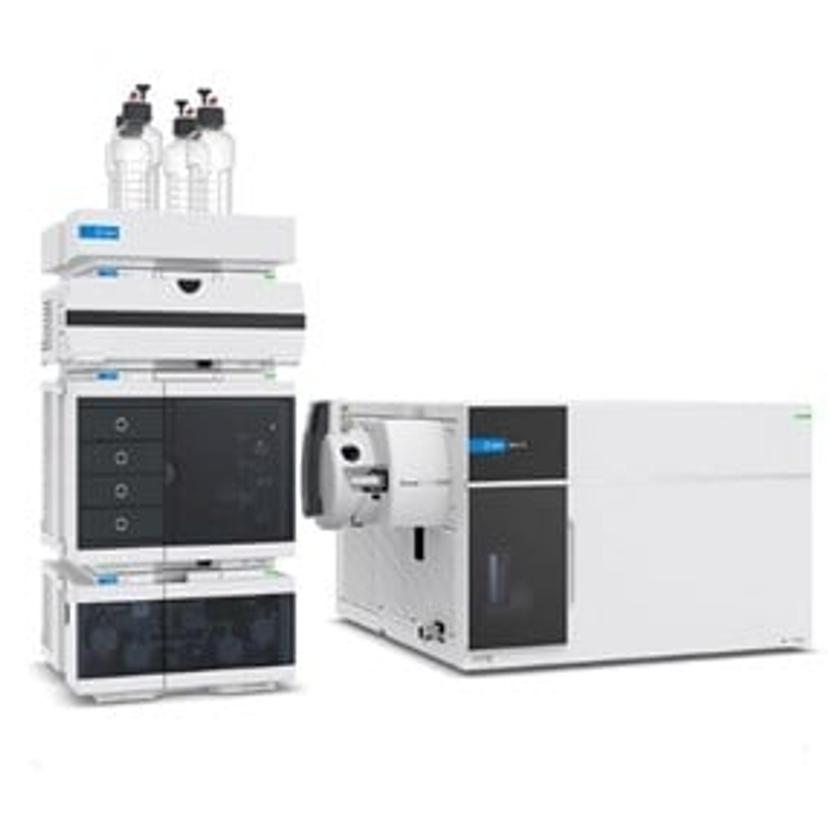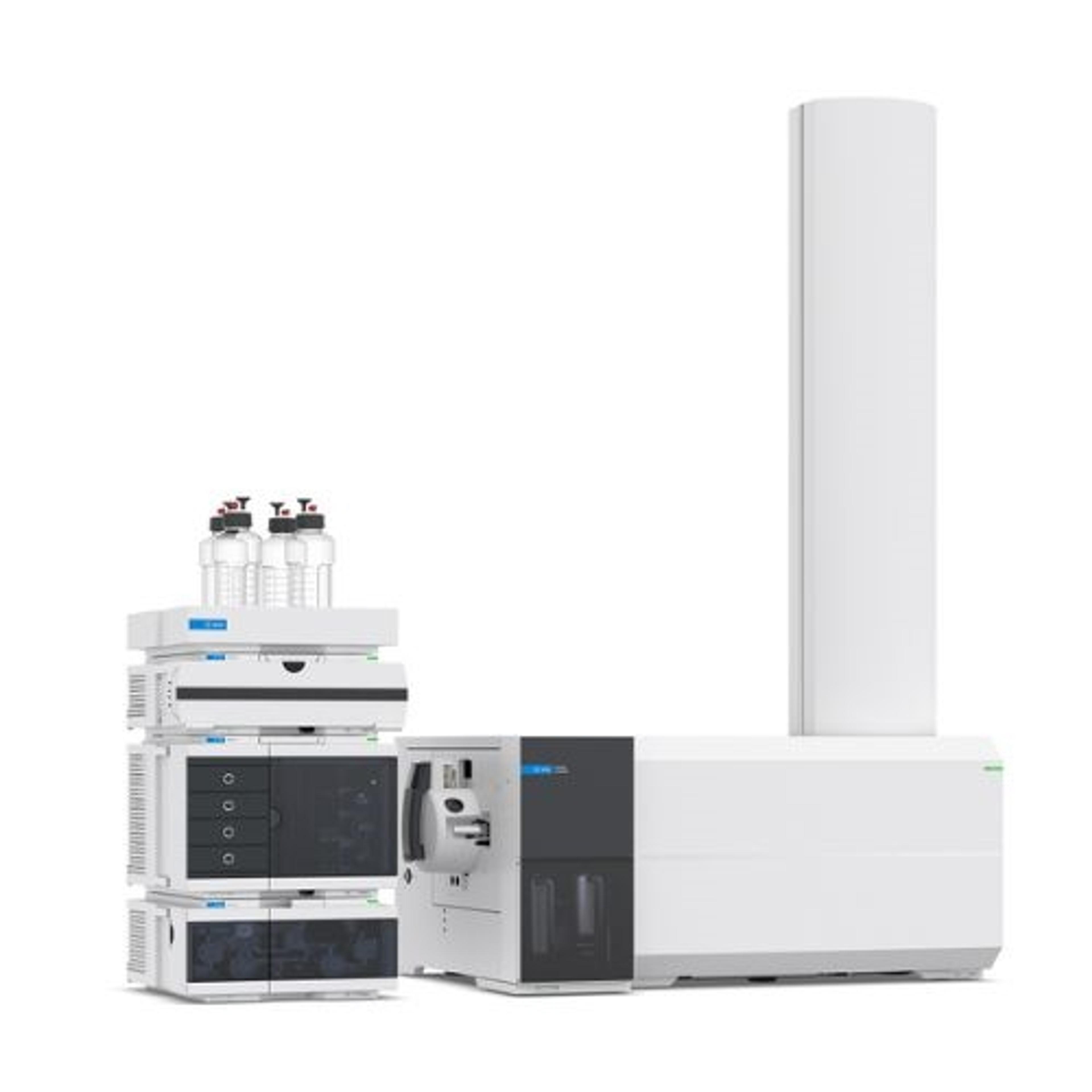Revolutionize pesticide residue testing in food with intelligent LC/MS
The Agilent 6495 LC/TQ and Revident LC/Q-TOF LC/MS systems deliver maximum uptime, throughput, and insight to meet the ever-evolving demands of food testing
12 Sept 2023
Pesticides play a crucial role in maximizing food and feed production, but their potential toxicity poses a significant concern. To ensure consumer safety, regulatory bodies worldwide have established stringent limits for pesticide residues in food and animal feed. However, the analysis of these compounds presents significant challenges, exacerbated by the expanding range of pesticide classes, constant emergence of new compounds, complex food matrices, and low limits of quantification (LoQ). To overcome these obstacles, researchers require robust and reliable instruments that can detect analytes well below maximum residue limits (MRLs), expedite analysis times, and streamline method development.
In this article, SelectScience® speaks with Dr. Lorna De Leoz, Global Food Market Manager at Agilent Technologies, to explore how these requirements can be met with Agilent’s latest triple quadrupole and quadrupole time-of-flight LC/MS technology. De Leoz discusses how the intelligent features of Agilent’s new 6495 triple quadrupole LC/MS (LC/TQ) and Revident LC/Q-TOF systems, including AI-based tuning, early maintenance feedback, and data driven automation, can ensure maximum instrument uptime, enhance throughput, and enable laboratories to meet the current and future demands of pesticide residue analysis with confidence.
Challenges of pesticide residue testing
Pesticides are integral for protecting crops from pests such as insects, fungi, and weeds, and are necessary in most growing environments to obtain high product yields. However, they are potentially toxic to both the environment and humans, posing the risk of long-term adverse health effects. “The health effects of pesticides can vary depending on their chemical composition, for instance, organophosphates and carbamates, two common pesticide classes, can adversely affect the nervous system,” explains De Leoz. “Other pesticides may cause skin or eye irritation, disrupt the endocrine system, or even exhibit carcinogenic properties. Regulatory agencies such as the Environmental Protection Agency (EPA) provide comprehensive lists of the harmful effects associated with specific pesticides.”
“There are several classes of pesticide based on target organisms, including insecticides, nematicides, miticides, herbicides, fungicides, and bactericides, but as the number of new pesticides keeps growing, more and more compounds are being added to the list for monitoring purposes.”
Dr. Lorna De Leoz, Global Food Market Manger at Agilent Technologies
To ensure consumer safety, screening and reporting levels of pesticide residues remaining in or on food commodities are required by many regulatory bodies, such as the US-EPA and the European Commission. However, with the continued introduction of new pesticides by the agrochemical industry, the scope of testing is ever-expanding. “There are several classes of pesticide based on target organisms, including insecticides, nematicides, miticides, herbicides, fungicides, and bactericides, but as the number of new pesticides keeps growing, more and more compounds are being added to the list for monitoring purposes or establishing MRLs,” explains De Leoz. “At the same time, regulators are requesting lower MRLs, which drives the need for lower limits of quantification.”
In addition to the increasing range of target compounds, laboratories are also facing a greater diversity of complex food matrices, driven in part by the increase in global food trade and an influx of preserved and processed foods. “The complexity of food matrices poses additional challenges to method development, especially when dealing with sample preparation and matrix effects,” De Leoz adds. “All these things add up and make pesticide residue analysis exceptionally challenging.
Leverage Agilent’s latest and greatest LC/MS systems
Overcoming these challenges requires the use of multi-residue methods underpinned by sensitive, fast, and robust instrumentation as well as sophisticated software to process the vast amount of generated data. With nearly four decades of experience in the field of food safety analysis, Agilent Technologies has developed a comprehensive portfolio of liquid chromatography-mass spectrometry (LC/MS) instruments, consumables, and accessories to address these requirements. The new 6495 Triple Quadrupole and Revident LC/Q-TOF systems are the latest additions to this lineup.

“The Revident LC/Q-TOF is our latest and greatest quadrupole time-of-flight instrument,” De Leoz enthuses. “What sets this system apart is its ability to not only facilitate targeted identification of pesticides listed in regulations but also support suspect screening, enabling users to detect pesticides that are currently being monitored for regulation but have not yet been assigned specific MRLs.”
Both the 6495 Triple Quadrupole LC/MS and the Revident Q-TOF LC/MS system introduce a range of hardware and software enhancements compared to previous instrument generations. “For example, both instruments incorporate VacShield technology, which allows users to carry out front-end ion injector maintenance without the need for venting and disassembly,” says De Leoz. “VacShield reduces the time taken to maintain the front end of the instrument from over 6 hours to 30 minutes, increasing productivity by 92%.”
“The 6495 LC/TQ also features our fourth generation iFunnel, which captures more ions and delivers up to a tenfold improvement in signal,” she continues. “Then there’s the tapered hexapole collision cell at the back of the instrument which dramatically reduces chemical noise.”
Hailed as the first of a new generation of LC/Q-TOF systems, the Revident system offers an entirely new instrument architecture together with a novel, ultrafast detector. “The detector has been greatly improved to achieve maximum resolving power over a wide dynamic range, while the instrument also features a temperature-stabilized flight tube to ensure temperature stability and mass accuracy,” notes De Leoz.
Work smarter with onboard intelligence
One of the most significant upgrades to both the 6495 LC/TQ and Revident LC/Q-TOF systems is the integration of onboard intelligence technologies, including early maintenance feedback, scheduled tune and check-tune procedures, as well as data driven automation with intelligent workflows.
“My favorite intelligence feature, which is very simple but effective, is the scheduled autotune and check-tune,” De Leoz enthuses. “Users can set the check tune in the middle of the day to verify if the instrument is still in good condition or instruct the instrument to produce periodic check-tune reports. We’ve seen some customers set their instrument to automatically tune and calibrate before they arrive in the lab, so by the time they enter the room, they know that the instrument has been tuned and verified to be in good performance and they’re ready to acquire data.”
Another intelligent feature designed to enhance laboratory productivity is early maintenance feedback, allowing users to monitor the system’s health in real-time, anticipate downtime, and promptly resolve immediate issues. “You have a dashboard that reads like a battery bar to view system health parameters such as the age of the rough pump oil, the injection count, etc.,” explains De Leoz. “All relevant metrics are tracked and monitored throughout the instrument’s operation, and it has event flags to pinpoint when and where issues may arise.”
In addition to features designed to streamline instrument start-up and maintenance, the 6495 LC/TQ and Revident LC/Q-TOF systems also introduce time saving intelligent workflows that apply reinjection logic in real time, known as Intelligent Reflex, enabling data driven automation. This operates under three distinct workflows, each serving to improve throughput and ensure results are within operational limits. “The first is carryover detection, whereby if a user runs a blank and there’s some remaining sample, the system will detect it and re-inject blanks until the carryover is washed out,” explains De Leoz. “Next, there’s the calibration range function. If the concentration of the sample is too high, the system will re-inject the sample with a lower injection volume so that the value can be within the calibration curve. Finally, there’s a fast-screening workflow to help users increase throughput dramatically.” Here, samples are first analyzed with a rapid LC method and if targets are detected, the sample is identified as a presumptive positive and gets re-injected for a more comprehensive, longer quantitative method. “This is particularly useful if targets are detected in samples at a very low rate,” she adds. “If the targets are not detected, the system skips to the next sample.”
In the Revident LC/Q-TOF system, Intelligent Reflex goes a step further, facilitating a suspect screening workflow as well as an iterative MS/MS workflow. During suspect screening, the Intelligent Reflex automatically processes results after an initial sample is run in data independent acquisition (DIA) mode and triggers an optional reinjection of the sample to confirm questionable or identified residues via targeted MS/MS. “This workflow is enabled by a dedicated LC/Q-TOF screener tool,” adds De Leoz. “It automatically evaluates the data and provides a rapid and user-friendly overview of results.”
Advancing the field of pesticide analysis
With its latest intelligent LC/MS instruments, Agilent has made significant strides toward addressing the challenges faced by food testing laboratories and paving the way to increased throughput and efficiency. “Through the ultra-high sensitivity of the 6495 LC/TQ, required limits of detection can easily be achieved day in and day out,” De Leoz enthuses. “It also has sub-millisecond dwell times, meaning many pesticides can be analyzed in a single run. For example, Agilent recently released an application note where we analyzed over 750 pesticides in tomato conforming to the SANTE guidelines.”
“The Revident LC/Q-TOF, with its dedicated LC Screener Tool, empowers laboratories to conduct high-resolution targeted screening of samples containing a large number of potential suspects,” she continues. “The advanced hardware of both instruments, coupled with the sophisticated onboard instrument intelligence, ensures labs can maximize uptime, easily maintain optimum instrument performance, and have complete confidence in their results.”


